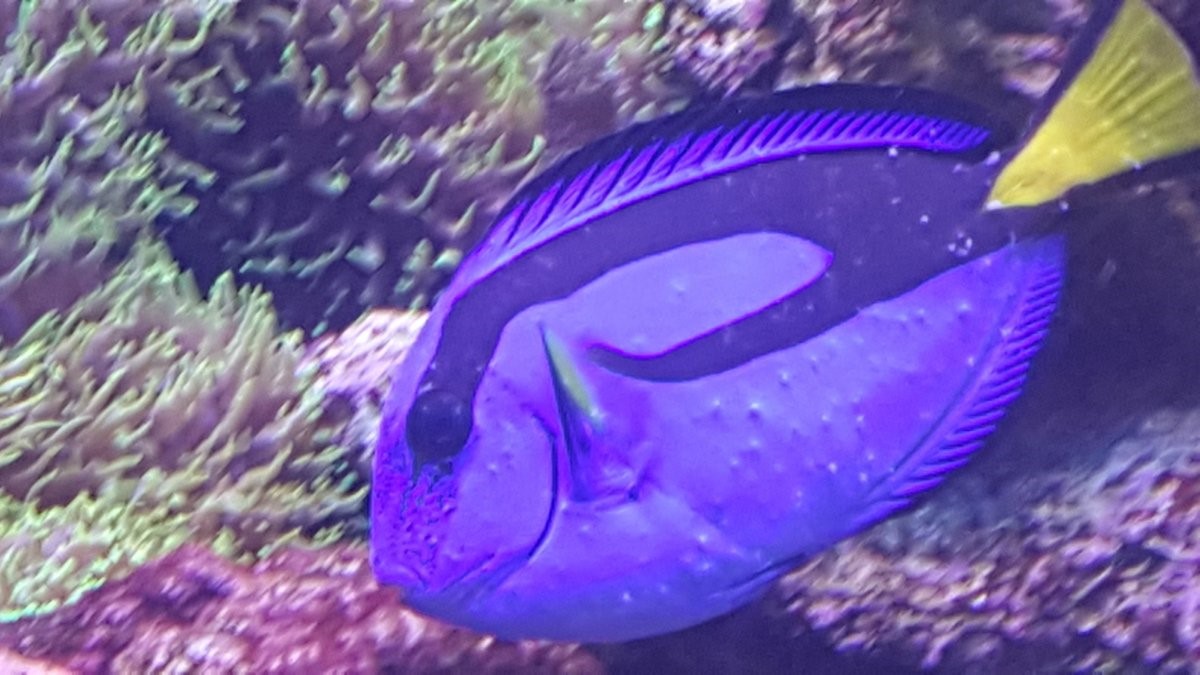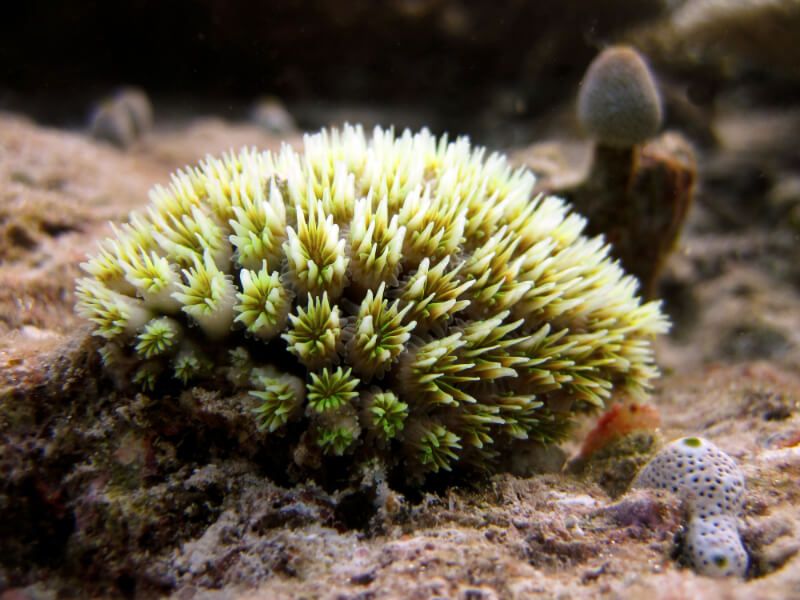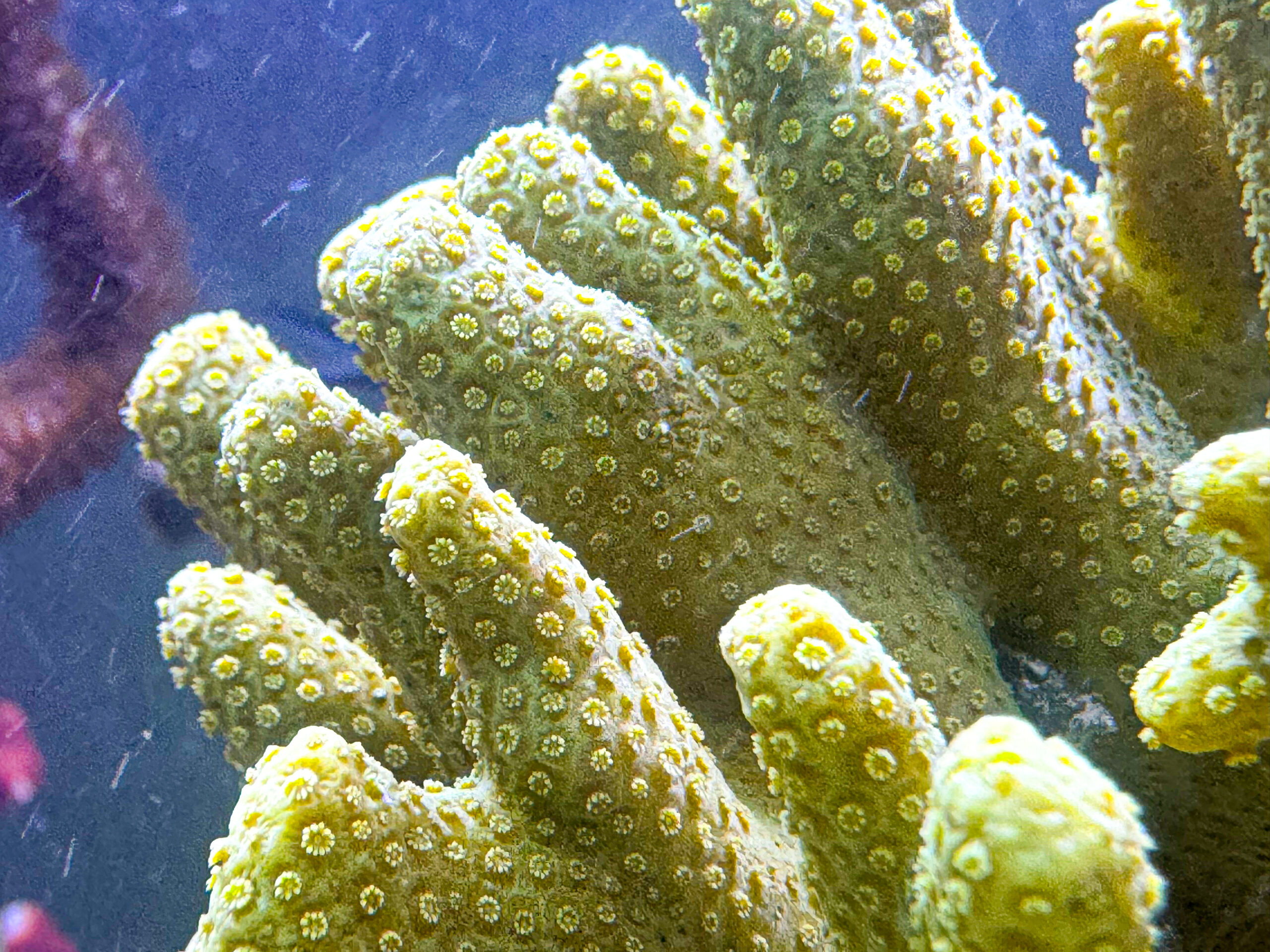Marine Ich is one of the most prolific parasites in both the Reef Aquarium Hobby and Commercial Aquaculture. Cryptocaryon irritans is an obligate parasitic ciliate that can infect most marine fish taxa. Marine ich has a complex life cycle, which includes both active-infective stages (theronts) as well as storage-cyst stages (tomonts). These tomonts can persist for long periods of time waiting to be exposed to susceptible fish. This complex life cycle allows marine ich to spread amongst marine fish collected from the wild and rapidly propagate amongst fish held in distribution/wholesale facilities. This means that infected fish inevitably end up in local fish stores thus exposing the average home reef aquarium to this parasite.
Marine ich also has a habit of infecting commercial aquaculture nurseries, where concentrated young fish are exposed to wild sea water (either while in net pens or flow-through systems). When young fish are held in high densities and are stressed, mass outbreaks of marine ich can and will occur, resulting in thousands of dollars in early-stage production loss. In the reef aquarium, marine ich outbreaks can incur unacceptable levels of stress to priceless tangs and other ornamental fish, causing them to die directly of Cryptocaryoniasis or through secondary causes. Because of the persistent threat this parasite presents to reefers and aquaculturists alike, there has been a tremendous swell of effort placed into deriving a vaccine that could safeguard fish against infection. Over the last few decades, great advances have been made with these endeavors, though no single ‘one vaccine for all fish’ exists at this time.
Multiple drugs have been experimented with to combat ich infestations. These include copper, formalin, and quinine drugs. Alas, many of these chemical solutions share the following limitations:
- The chemical is detrimental to the fish and its microbiome
- The chemical is detrimental to aquarium tankmates (corals, invertebrates, etc.) or organisms in the surrounding environment.
- The chemical makes the meat unsuitable for human consumption/other uses.
- Prolonged use of a single chemical would likely produce resistant strains of C. irritans.
Because of the collective limitations of chemical cures, there is a growing interest in the development of a solution that would be specific to C. irritans but would have minimal impact on the health of the fish or surrounding ecosystem. A vaccine could present such a solution.
It has long been anecdotally understood in the reef aquarium industry that fish infected with marine ich, that have survived, are unlikely to die (or even manifest symptoms) from the disease in the future. In contrast, new, naive fish brought into the same aquarium may immediately manifest symptoms…potentially inducing a stress cascade that leads to a mass infection. Yet, as long as there are no additional stress factors, previously infected fish are likely the ones that will survive such outbreaks.
In 1995, Burgess and Mathews were the first to formally observe this adapted immunity to C. irritans in thick-lipped mullet (Chelon labrosus). In 1997, these findings were reinforced by Yoshigana and Nakazoe who observed acquired resistance in mummichog killifish (Fundulus heteroclitus). Furthermore, they demonstrated how the blood serum of previously infected fish would immobilize exposed theronts. It was also revealed that the slime of previously infected fish contained various immobilization enzymes. The observation of this acquired immunity is nothing new, but the ability to understand and control it would be paramount to truly controlling future infestations of marine ich.
The first vaccination efforts to combat Cryptocaryon irritans involved the exposure of live or dead theronts to naive fish. This was done with the intention of ‘wisening’ the immune response of that fish to the parasite. This proved highly effective and various methods have been derived to kill theronts and inject them into the peritoneal cavity of fish. Theronts proved the most effective of all the parasite’s life stages at provoking the immune systems of fish. This technique was initially derived with the intended application of commercial aquaculture. For this application, it has a lot of drawbacks, mostly concerned with production of scale.
Currently there are no methods to produce C. irritans without a host…making the production/collection of mass theronts a difficult and expensive proposition. Such a practice is by no means practical for large-scale fish production, but may find newfound value in the Reef Aquarium Industry. In the reef hobby, there are countless examples of rare fish collected from the wild where a single individual may be worth a thousand wholesale food fish. Such precious individual specimens may be collected from wild ecosystems where marine ich infestations have never occurred. Yet, they will inevitably be exposed to the parasite while in the hobby. There is an argument that such priceless, naive species can and should receive an inoculation of dead parasites…and there is the accompanying argument that such vaccination would considerably contribute to the value of that specimen as well.
With the use of actual parasites as a vaccine source to be impractical, there have been many efforts to isolate antigens from the marine ich parasite. Antigens are chemicals released by pathogens that can be recognized by a host cell. If the host is experienced, it will be able to make a counter compound, an antibody, which will immobilize the ciliate parasite. This recognition will also lead to activation of various genes associated with the fish general immune response (thickening slime coat, increased lymphocytes etc.). The key to a vaccine is deriving a means of delivering that antigen signal..without the work of producing the whole parasite. This is where preventing marine ich gets complicated and difficult.
In 2007, Hatanka et al identified the first i-antigen of Cryptocaryon irritans. The intensification of this antigen allowed for the production of both DNA and Recombinant vaccines for the experimental control of marine ich. DNA vaccines work by having a genetically modified plasmid coding for the i-antigen. Usually, this plasmid is placed in a bacteria (E. coli), which acts as a nanofactory to produce the antigen in abundance. The antigen can then be purified and injected into the host, hopefully triggering a profound immune response. For marine ich, this process was complicated by the fact that ciliate DNA is coded very differently from animals and bacteria. Thus to allow this process, the DNA coding for the i-antigen had to first be modified to be expressed by fish cells and then bacteria. The fruits of all this work allowed for the development of an efficacious vaccine for the orange-spotted grouper (Epinephelus coioides). This vaccine had a 96% survival rate when delivered orally versus only 46% when delivered through injection. This presents another complication that the delivery method used greatly affects the vaccine’s overall efficacy.
In 2015, Josepriya et al identified a heat shock protein (Hsp70) unique to C. irritans. This unique heat shock protein could be coded for and deployed as a vaccine just like i-antigens. Furthermore, the Hsp70 vaccine could be combined with the i-antigen vaccine to produce even higher levels of survival among orange-spotted groupers exposed to marine ich. However promising these results are, there are more complexities to the biology of C. irritans that limits the overall success of these DNA vaccines. It has been discovered that not all strains of marine ich possess the same i-antigens. Rather, there are several groups (serotypes) of C. irritans with distinct i-antigens. Therefore, one vaccine is likely to not provide immunity against all ich. A vaccine could be painstakingly developed and tested to combat one serotype of ich then injected into a tank full of hippo tangs. However, there is no guarantee that those fish will not eventually encounter a strain of ich belonging to a different serotype, which can then potentially infect them…this would likely be frustrating to a consumer who likely paid a premium for ‘ich-vaccinated’ fish.

(Figure Source: Wantanabe et al 2022)
Conclusions:
- Marine ich continues to persist as a prolific scourge, stifling the growth of both commercial fish aquaculture and the reef aquarium industry.
- Great advances have been made in recognizing i-antigens and unique heat shock proteins for C. irritans, and these natural cues have been used to develop efficacious DNA and Recombinant Vaccines.
- Existing vaccines are limited in efficacy due to the natural variance amongst C. irritans strains.
- It is imperative that the various strains of C. irritans be cataloged, along with their respective i-antigens and that vaccines be developed for each variant.
- More work should be done to understand the immune mechanisms various fish taxa possess to ward off infections of C. irritans and which nutritional/environmental factors promote these immune responses.
Despite the absence of a readily available commercial vaccine to date, marine ich (Cryptocaryon irritans) presents a unique opportunity to venture boldly ahead towards the future of fish husbandry. The development of the various experimental vaccines is a testament to how much more is understood about this parasite now then a was but a few decades ago. Perhaps there will be a near future where there will exist enough vaccines to protect a single fish species from nearly all strains of marine ich. Once this is achieved, aquarists and aquaculturists everywhere will rejoice…for the days of mass mortality by Cryptocaryoniasis would be soon coming to an end.
Literature Consulted
Burgess, P. J., & Matthews, R. A. (1995). Cryptocaryon irritans (Ciliophora): acquired protective immunity in the thick-lipped mullet, Chelon labrosus. Fish & Shellfish Immunology, 5(6), 459-468.
Colorni, A., & Burgess, P. (1997). Cryptocaryon irritans Brown 1951, the cause of ‘white spot disease’in marine fish: an update. Aquarium Sciences and Conservation, 1, 217-238.
??Hatanaka, A., Umeda, N., Yamashita, S., & Hirazawa, N. (2007). Identification and characterization of a putative agglutination/immobilization antigen on the surface of Cryptocaryon irritans. Parasitology, 134(9), 1163-1174.
Josepriya, T. A., Chien, K. H., Lin, H. Y., Huang, H. N., Wu, C. J., & Song, Y. L. (2015). Immobilization antigen vaccine adjuvanted by parasitic heat shock protein 70C confers high protection in fish against cryptocaryonosis. Fish & shellfish immunology, 45(2), 517-527.
Josepriya, T. A., & Sudha, K. (2020). Molecular remedies against Cryptocaryon irritans Brown, 1951—Practical difficulties. Aquaculture Research, 51(10), 3935-3946.
Watanabe, Y., & Yoshinaga, T. (2022). Vaccine Development against Cryptocaryoniasis: A Review. Fish Pathology, 57(1), 1-10.
Yanong, R. P. (2010). Cryptocaryon irritans Infections (Marine White Spot Disease) in Fish: FA164/FA164, 12/2009. EDIS, 2010(2).
Yin, F., Sun, P., Tang, B., Dan, X., & Li, A. (2015). Immunological, ionic and biochemical responses in blood serum of the marine fish Trachinotus ovatus to poly-infection by Cryptocaryon irritans. Experimental parasitology, 154, 113-117.
Yoshinaga, T., & Nakazoe, J. I. (1997). Acquired protection and production of immobilization antibody against Cryptocaryon irritans (Ciliophora, Hymenostomatida) in mummichog (Fundulus heteroclitus). Fish Pathology, 32(4), 229-230.



